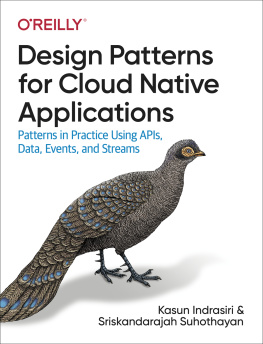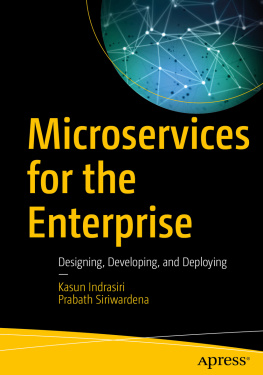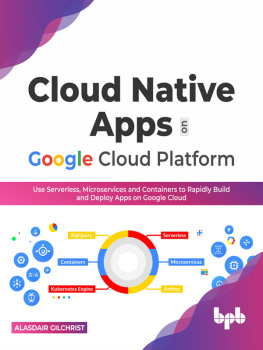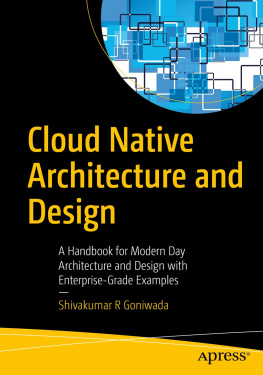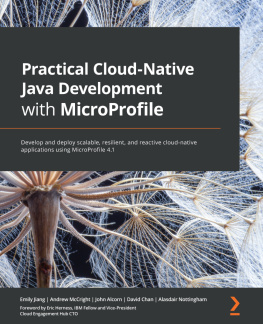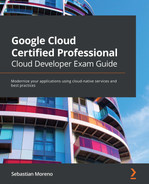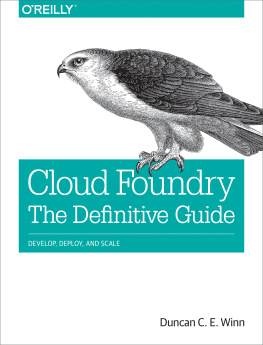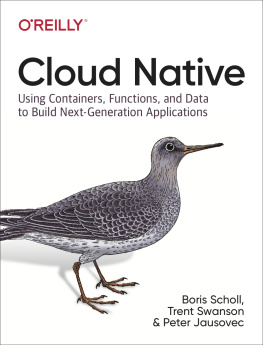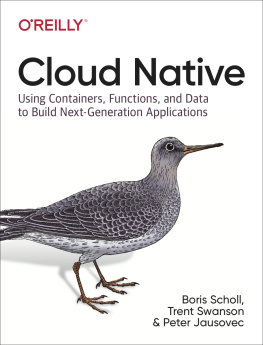Design Patterns for Cloud Native Applications
by Kasun Indrasiri and Sriskandarajah Suhothayan
Copyright 2021 Kasun Indrasiri and Sriskandarajah Suhothayan. All rights reserved.
Printed in the United States of America.
Published by OReilly Media, Inc. , 1005 Gravenstein Highway North, Sebastopol, CA 95472.
OReilly books may be purchased for educational, business, or sales promotional use. Online editions are also available for most titles (http://oreilly.com). For more information, contact our corporate/institutional sales department: 800-998-9938 or corporate@oreilly.com .
- Acquisitions Editor: Jennifer Pollock
- Development Editor: Nicole Tach
- Production Editor: Deborah Baker
- Copyeditor: Sharon Wilkey
- Proofreader: Penelope Perkins
- Indexer: Potomac Indexing, LLC
- Interior Designer: David Futato
- Cover Designer: Karen Montgomery
- Illustrator: Kate Dullea
Revision History for the First Edition
- 2021-05-14: First Release
See http://oreilly.com/catalog/errata.csp?isbn=9781492090717 for release details.
The OReilly logo is a registered trademark of OReilly Media, Inc. Design Patterns for Cloud Native Applications, the cover image, and related trade dress are trademarks of OReilly Media, Inc.
The views expressed in this work are those of the authors, and do not represent the publishers views. While the publisher and the authors have used good faith efforts to ensure that the information and instructions contained in this work are accurate, the publisher and the authors disclaim all responsibility for errors or omissions, including without limitation responsibility for damages resulting from the use of or reliance on this work. Use of the information and instructions contained in this work is at your own risk. If any code samples or other technology this work contains or describes is subject to open source licenses or the intellectual property rights of others, it is your responsibility to ensure that your use thereof complies with such licenses and/or rights.
978-1-492-09071-7
[LSI]
Preface
Cloud Native architecture is all about building software applications as a collection of independent, loosely coupled, business capabilityoriented services (microservices) that can run on dynamic environments (public, private, hybrid, multicloud) in an automated, scalable, resilient, manageable, and observable way.
Writing applications to work natively on the cloud is increasingly common due to the agility, reliability, affordability, and scalability it provides. In current cloud native architecture, the focus is mostly on deployment and operational aspects of applications. However, when building cloud native applications, we cant apply conventional application development patterns and techniques. This book addresses this issue by defining proven solutions as patterns based on APIs, data, events, and streams. It aims to help architects and developers incrementally design, develop, and deploy cloud native applications that are optimal for their use cases, and that can be managed and maintained with minimal cost, time, and effort.
There is a wide range of design patterns that architects and developers can apply when building cloud native applications. In this book, we mainly focus on the development patterns that must be applied when building the business logic of cloud native applications, when connecting them, and when enabling external parties to consume them. Depending on the nature of your application, and the patterns you use to build it, the cross-cutting capabilities such as deployment, scaling, security, and observability may be implemented differently. For that reason, we spend some time discussing the trade-offs and ramifications of using the various patterns. We organize these patterns into seven key areas: communication, connectivity, composition, data, events, stream processing, and API management and consumption.
The chapters in the book are organized as follows:
This chapter helps you understand what cloud native is by exploring the key characteristics of cloud native applications. We focus on the importance of using design patterns for building cloud native applications.This gives you a broad understanding of the communication patterns and implementation technologies that you can use to build cloud native applications. We mainly focus here on foundational communication patterns for synchronous and asynchronous communication.Here we explore a wide range of patterns that build connectivity between microservices as well as with other existing systems in a cloud native application. We also look at creating business functionalities by integrating services using Service Composition patterns.In this chapter we look at patterns for managing data in cloud native applications. We focus on the selection of data stores, and how data can be integrated with cloud native applications via data composition, while supporting scalability and reliability and optimizing for performance.We cover the design patterns for building event-driven architectures using cloud native applications. Here, we focus on basic event delivery, event sourcing, and how events can be orchestrated among various asynchronous cloud native applications.This chapter explores patterns for processing event streams at scale by both stateful and stateless cloud native applications. We also look at patterns for building reliability into real-time applications, so that they can preserve their in-memory states across failures.This chapter explores some of the most commonly used patterns in API management. We also cover a few API Consumption patterns, which are essential in building frontend applications such as a web application, mobile application, or desktop application on top of the managed APIs.This final chapter shows you how to apply various cloud native patterns when building different aspects of a real-world cloud native application.
Conventions Used in This Book
The following typographical conventions are used in this book:
Tip
This element signifies a tip or suggestion.
Note
This element signifies a general note.
Warning
This element indicates a warning or caution.
OReilly Online Learning
Note
For more than 40 years, OReilly Media has provided technology and business training, knowledge, and insight to help companies succeed.
Our unique network of experts and innovators share their knowledge and expertise through books, articles, and our online learning platform. OReillys online learning platform gives you on-demand access to live training courses, in-depth learning paths, interactive coding environments, and a vast collection of text and video from OReilly and 200+ other publishers. For more information, visit http://oreilly.com.
How to Contact Us
Please address comments and questions concerning this book to the publisher:
- OReilly Media, Inc.
- 1005 Gravenstein Highway North
- Sebastopol, CA 95472
- 800-998-9938 (in the United States or Canada)
- 707-829-0515 (international or local)
- 707-829-0104 (fax)
You can access the web page for this book, where we list errata and any additional information, at https://oreil.ly/Design_Patterns_for_CloudNative_Apps.
Email to comment or ask technical questions about this book.
For news and information about our books and courses, visit http://oreilly.com.
Find us on Facebook: http://facebook.com/oreilly

